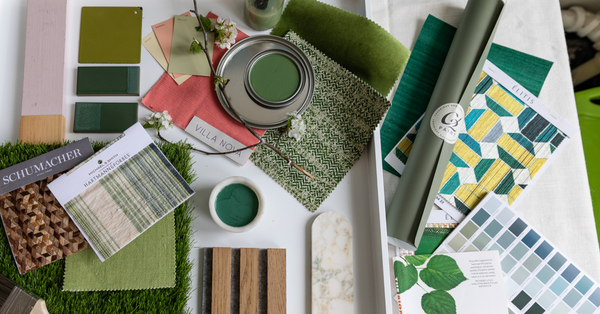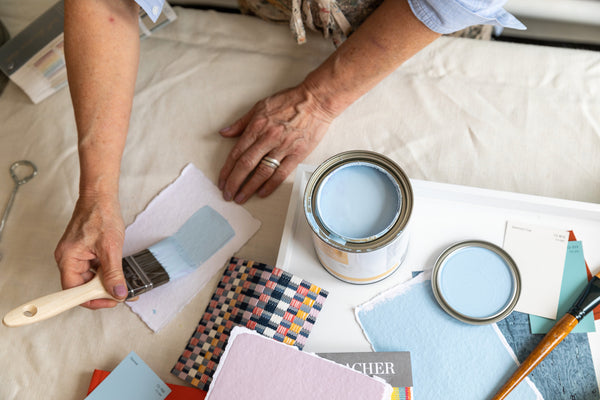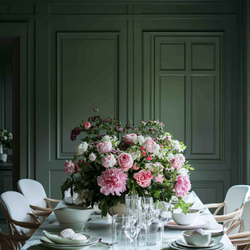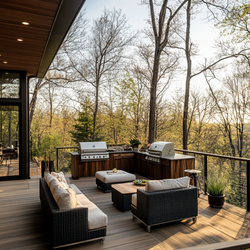The Ten Commandments of Choosing Color
Choosing color can be hard, especially when you have so many choices. Adhering to these commandments will not only simplify the process of choosing paint colors but also ensure that the final outcome is a space that beautifully reflects your personality and meets your needs. Following these designer recommendations will make you a pro time!

1. TO THINE OWN SELF BE TRUE
Be authentic and true to yourself. What really matters is how you respond to it. If the color works for you, it's right, so trust your instincts. Choose colors that make you feel comfortable and happy so it's a reflection of your unique style.
2. GET MOODY

Ask yourself about the experience you want to have within that particular space. How do you want the space to feel? What do you want the mood to be? Colors have emotion and can bring that to life. Starting with color can lead you to making the most authentic choices. Determine the atmosphere you wish to create. Soft, cool colors evoke tranquility, while bold, warm tones can energize a space. Let the room's purpose guide your palette.
3. SEEK INSPIRATION
We often imitate before we can innovate, so resource through as many areas as possible for ideas and inspiration. From magazines to movies to art and nature, Pinterest, fabric shops…get out and explore! Think about the context of color and placement, finishes and textures. What are you naturally drawn to? It also helps to write out a list of words that you associate with the space.
4. LET THERE BE LIGHT

Natural light plays a crucial role in how colors are perceived. A shade that glows warmly in a sun-drenched room may look muted in one lit by the north. Always consider the amount and direction of natural light, and use artificial lighting to compensate or enhance.
5. BREAK IT DOWN
Break color down into manageable components considering your space, like Paint by Numbers. Pair surfaces together as you build your palette (i.e., ceilings/floors). This concept helps you layer the colors while exploring the relationships between them. While embracing multiple colors, maintain balance. Use the 60-30-10 rule: 60% dominant color, 30% secondary color, and 10% accent color to create a harmonious space.
6. TRY BEFORE YOU BUY

Never commit to a paint color based on a chip alone. Purchase sample sizes to test on large sections of the wall. Observe how the color changes at different times of the day before making your final decision. Use samples made with actual paint to ensure that what you see is what you get.
7. LET IT FLOW
Consider threading one color throughout your entire home – one that links all the rooms, varying from being a broad stroke to barely traceable. Your eye will always find it, and it will help your color transition gracefully from room to room. Choose colors that can converse with each other from room to room. We all perceive color so differently that what we need to empower ourselves to be the narrator of our own color story.
8. EMBRACE THE ACCENTS
Accents improve all color schemes, the final touches of color that add an element of surprise and bring rooms to life. Introduce color accents with pillows, artwork, or unique tabletop accessories. Use this as an opportunity to showcase items that represent your individual style story.
9. SIMPLE SURPRISES

One way to elevate your design is to use color in unexpected places: behind closed doors, kitchen islands, inside cabinets, drawers, and closets. Dashes of color provide an element of surprise, much like having a beautiful colored lining inside of a coat.
10. FINISH IT RIGHT
The paint's finish—from matte to high gloss—impacts the final look and feel. Matte finishes hide imperfections and though less durable they suit many of the current design trends, while glossier finishes offer durability and clean easily, making them more preferred for high-traffic areas.
With these tips, you can say goodbye to the stress that comes with sifting through thousands of paint color and start choosing color with joy and intention!











